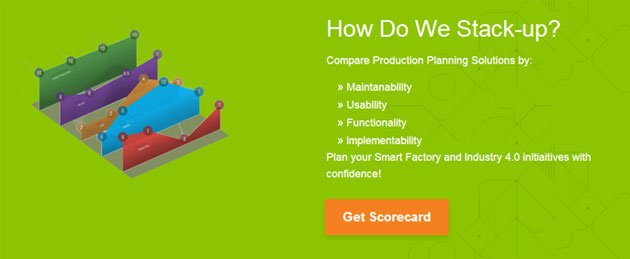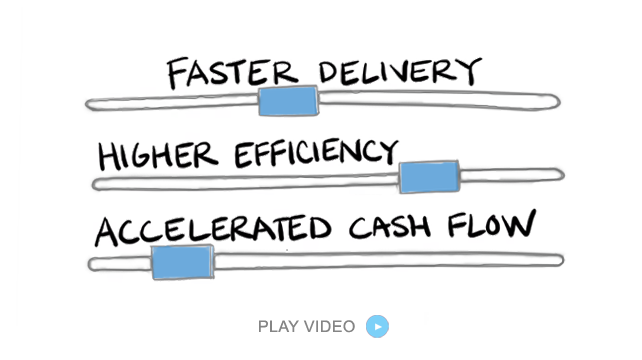Balancing Flexibility and Stability in Scheduling for Chemical Manufacturing: Leveraging Integrated Solutions
In the world of chemical manufacturing, scheduling is not just a task—it's a strategic process that directly impacts production efficiency, resource utilization, and profitability. The complexity of balancing flexibility and stability in scheduling is a persistent challenge for production planners. Factors such as fluctuating demand, tight regulatory requirements, volatile raw material supplies, and diverse product portfolios make this balancing act critical.
Modern solutions, such as PlanetTogether integrated with systems like SAP, Oracle, Microsoft, Kinaxis, or Aveva, offer a way to streamline this process. By enabling real-time data integration and advanced analytics, these tools empower production planners to make informed decisions that accommodate both stability and adaptability.

The Need for Stability in Scheduling
Stability in scheduling ensures consistency, predictability, and efficiency in chemical manufacturing operations. It minimizes disruptions, reduces waste, and aligns production with organizational goals. Key advantages of stable scheduling include:
Predictable Resource Allocation: Stability allows planners to efficiently allocate resources such as raw materials, equipment, and labor. This predictability helps in maintaining production continuity and meeting delivery deadlines.
Regulatory Compliance: The chemical industry is highly regulated. Stable schedules help ensure compliance by minimizing deviations that could lead to quality issues or violations.
Cost Control: Stability reduces costs by minimizing changeovers, overtime, and emergency procurement of materials.
However, excessive rigidity can lead to missed opportunities, inefficiencies, and a failure to respond to market dynamics.

The Role of Flexibility in Scheduling
Flexibility, on the other hand, enables production planners to adapt to unexpected changes. Whether it’s a sudden increase in demand, supply chain disruptions, or equipment downtime, flexibility ensures that operations can pivot quickly without compromising output quality.
Benefits of flexibility include:
Improved Responsiveness: Flexible scheduling allows planners to adjust production to accommodate changes in customer demand or supply chain conditions.
Enhanced Innovation: A flexible system encourages experimentation with new processes or product lines without disrupting ongoing operations.
Resilience: Flexibility fosters resilience by enabling the organization to absorb shocks and recover from disruptions more effectively.

The Role of Integrated Systems
This is where tools like PlanetTogether, integrated with ERP systems such as SAP, Oracle, Microsoft Dynamics, Kinaxis, or Aveva, become indispensable. These platforms provide production planners with the visibility, analytics, and decision-support capabilities needed to balance stability and flexibility.
Enhanced Data Visibility
Integrated systems break down data silos by connecting various departments, including procurement, production, and logistics. This centralized visibility ensures that planners have access to accurate, real-time data. For example:
SAP Integration: By integrating with SAP, PlanetTogether can pull data on inventory levels, production orders, and delivery schedules to create optimized plans that accommodate both current and forecasted needs.
Kinaxis Integration: Kinaxis’s strength in demand planning complements PlanetTogether’s scheduling capabilities, ensuring alignment between demand and production.
Scenario Planning and Simulation
One of the most powerful features of integrated systems is their ability to simulate various scheduling scenarios. Planners can test the impact of different decisions, such as rescheduling production runs or reallocating resources, without disrupting actual operations.
For instance, a planner could use PlanetTogether’s integration with Aveva’s engineering tools to simulate equipment downtime scenarios and identify the least disruptive course of action.
Dynamic Scheduling
Dynamic scheduling capabilities enable planners to adjust schedules in real-time based on changing conditions. These adjustments can be automated to a degree, ensuring quick responses without requiring constant manual intervention. For example:
Oracle Integration: Oracle’s robust analytics combined with PlanetTogether’s scheduling engine can dynamically adjust production sequences based on raw material availability, ensuring minimal downtime.
Regulatory Compliance
Integrated systems ensure that any adjustments to the schedule remain compliant with regulatory standards. This is particularly important in chemical manufacturing, where even minor deviations can have significant consequences.
Improved Communication
Integration fosters better communication across teams, ensuring that all stakeholders are aligned. For example, an integration with Microsoft Dynamics can provide real-time updates to both production and sales teams, ensuring that everyone is on the same page.
Balancing flexibility and stability in scheduling is not just a challenge—it’s an opportunity. By leveraging integrated solutions like PlanetTogether in conjunction with SAP, Oracle, Microsoft Dynamics, Kinaxis, or Aveva, production planners in chemical manufacturing can achieve the best of both worlds. These tools provide the visibility, analytics, and decision-making support needed to navigate the complexities of modern manufacturing.
The result? A production schedule that is not only efficient and reliable but also adaptable and resilient. This balance empowers organizations to meet customer demands, maintain regulatory compliance, and stay competitive in an ever-changing industry landscape.
Are you ready to take your manufacturing operations to the next level? Contact us today to learn more about how PlanetTogether can help you achieve your goals and drive success in your industry.
Topics: Regulatory Compliance, PlanetTogether Software, Integrating PlanetTogether, Enhanced Data Visibility, Chemical Manufacturing, Predictable Resource Allocation, Resilience, Enhanced Innovation





















LEAVE A COMMENT